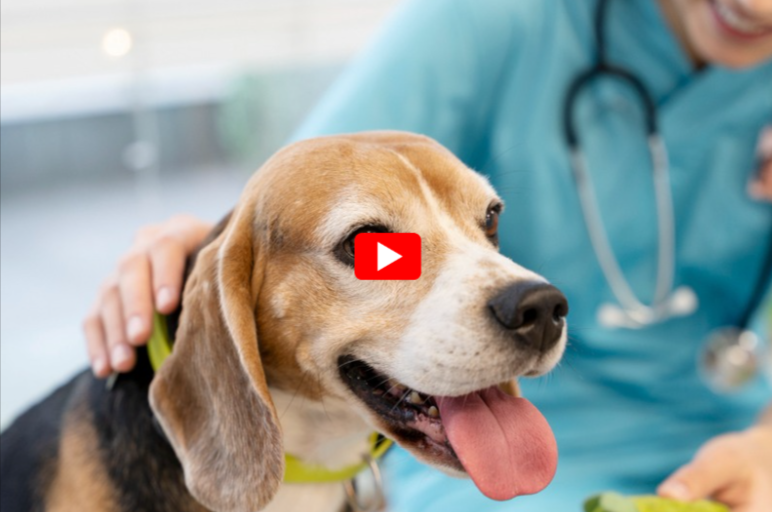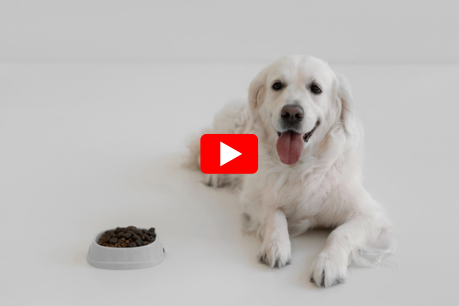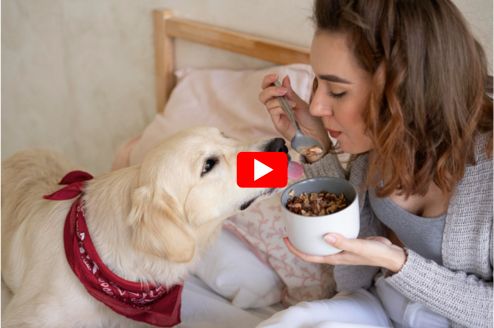Anal Glands in Dogs: Symptoms, Care, and Treatment Guide
When it comes to keeping our canine companions healthy, most pet owners focus on nutrition, exercise, vaccinations, and grooming. However, one often overlooked aspect of canine health is the care of anal glands in dogs.
These tiny glands, though small, play an important role in your dog’s health and communication habits. But when they become impacted or infected, they can cause significant discomfort and health concerns.
Anal glands in dogs are small scent glands near the anus. They can get impacted or infected, causing scooting, discomfort, and a strong odor.
In this comprehensive guide, we’ll break down everything you need to know about anal glands in dogs — what they are, why they matter, how to recognize issues, and the best ways to treat and prevent problems.
What Are Anal Glands in Dogs?
Anal glands, also known as anal sacs, are two small, pea-sized sacs located on either side of a dog’s anus, typically at the 4 o’clock and 8 o’clock positions.
These glands produce a foul-smelling, oily secretion used primarily for territorial marking and identification among other dogs.
When your dog defecates, these glands typically empty naturally, releasing their scent onto the feces. This is a way dogs communicate with one another in the wild.
Why Do Dogs Have Anal Glands?
In the animal world, scent is one of the most vital tools for communication. While humans rely on spoken and written language, dogs communicate much of their social information through scent. Anal gland secretions are part of this chemical communication.
Dogs use their anal gland secretions to:
- Mark their territory
- Identify themselves to other animals
- Establish dominance or submission within a pack
In domesticated dogs, this instinctual function is less necessary, but the glands remain.
Common Issues With Anal Glands in Dogs
Though these glands typically empty on their own, problems can arise if the glands don’t function correctly. Impaction, infection, and abscesses are the most common issues that can affect a dog’s anal glands.
1. Anal Gland Impaction
This occurs when the secretions thicken and the glands fail to empty naturally. This causes the glands to become swollen, tender, and uncomfortable.
2. Anal Gland Infection
An impaction can lead to bacterial infection, resulting in inflammation, swelling, and possible discharge of pus.
3. Anal Gland Abscess
If an infection progresses, it can result in a painful abscess that may rupture if left untreated, leading to bleeding and severe discomfort.
Symptoms of Anal Gland Problems in Dogs
Recognizing the signs of anal gland issues is crucial for prompt treatment. Symptoms include:
- Scooting: Dragging the rear along the ground
- Licking or biting at the anus or tail base
- Foul fishy odor near the rear end
- Visible swelling or redness around the anus
- Whining or signs of pain when sitting
- Difficulty defecating or changes in stool consistency
- Presence of blood or pus in stool or near the anus
If your dog exhibits any of these symptoms, a veterinary examination is recommended.
Causes of Anal Gland Problems in Dogs
Several factors contribute to anal gland problems, including:
- Dietary Issues: Low-fiber diets lead to soft stools, which are less effective at naturally expressing the glands.
- Obesity: Overweight dogs are more prone to gland dysfunction.
- Chronic Diarrhea: Loose stools do not provide enough pressure to empty the glands.
- Genetics: Some breeds are predisposed, especially smaller dogs like Chihuahuas, Pugs, and Shih Tzus.
- Allergies: Food or environmental allergies can cause inflammation in the anal area.
- Poor Grooming: Matted fur around the anus can obstruct natural gland expression.
Breeds Prone to Anal Gland Problems
Though any dog can suffer from anal gland issues, certain breeds are more likely to experience them:
- Bulldogs
- Beagles
- Cocker Spaniels
- Dachshunds
- Lhasa Apsos
- Toy and Miniature Poodles
- Chihuahuas
If you own one of these breeds, regular monitoring of anal gland health is advised.
Diagnosing Anal Gland Issues
If your dog shows signs of anal gland discomfort, a veterinarian will perform a physical examination, often manually expressing the glands to determine if they are impacted or infected.
In severe or recurring cases, further diagnostics may include:
- Cytology (examining gland fluid)
- Bacterial cultures
- Ultrasound or rectal examination
- Biopsy (in rare, serious cases)
Treatment for Anal Gland Issues in Dogs
The treatment for anal gland problems depends on the severity and type of issue:
1. Manual Expression
In mild cases, a veterinarian or groomer can manually express the glands to relieve pressure.
2. Warm Compresses
For minor impactions, warm compresses applied to the area can help soften secretions and promote natural expression.
3. Antibiotics
For infections, oral or topical antibiotics may be prescribed.
4. Pain Relievers and Anti-Inflammatories
Infected or inflamed glands may require medications to reduce pain and inflammation.
5. Abscess Drainage
If an abscess has formed, it will need to be drained and cleaned by a veterinarian.
6. Anal Sacculectomy (Surgical Removal)
For chronic or severe cases, surgical removal of the glands may be recommended. This is typically a last-resort treatment.
Home Care and Maintenance Tips
While some gland issues require veterinary care, there are steps you can take at home to promote anal gland health:
1. High-Fiber Diet
Adding fiber helps bulk up stools, promoting natural gland expression during bowel movements. Include foods like:
- Pumpkin puree
- Green beans
- Bran cereal
2. Regular Exercise
Maintains healthy weight and promotes regular bowel movements.
3. Proper Grooming
Keep the area around the anus clean and trimmed.
4. Monitor Stools
Keep an eye on the consistency of your dog’s stools — soft or inconsistent stools may signal dietary adjustments are needed.
5. Periodic Gland Expression
Some dogs may require regular manual expression. This should be done by a vet or trained groomer to avoid injury.
Natural Remedies and Prevention
Many dog owners explore natural methods to support anal gland health:
- Psyllium husk: A fiber supplement that bulks up stool
- Probiotics: Promotes gut health and balanced digestion
- Omega-3 fatty acids: Helps reduce inflammation
- Pumpkin puree: Rich in soluble fiber and palatable to dogs
Always consult your veterinarian before starting any new supplement or remedy.
When to See a Veterinarian
You should consult a vet if:
- Your dog frequently scoots or licks the area
- There’s visible swelling, redness, or discharge
- Foul odor persists
- Anal glands require frequent manual expression
- There’s blood in your dog’s stool
- Pain or discomfort is evident
Early veterinary care prevents complications like abscesses and chronic infections.
Complications of Untreated Anal Gland Problems
If left untreated, anal gland issues can result in:
- Chronic infections
- Ruptured abscesses
- Fistulas (abnormal openings)
- Rectal prolapse (in severe cases)
- Permanent gland damage requiring surgery
Conclusion
Anal glands in dogs, though a small part of their anatomy, play an essential role in their health and communication.
While some dogs never experience issues, many face discomfort due to impaction or infection. Early recognition of symptoms, proactive care, and veterinary guidance can prevent minor issues from escalating into serious health problems.
By maintaining a healthy diet, exercise routine, and proper grooming, you can minimize your dog’s risk of anal gland problems. Always be vigilant about unusual behavior like scooting or licking and consult your vet when in doubt. Keeping your dog comfortable and healthy is the best way to ensure a long, happy life together.
References Link
- Anal gland
https://en.wikipedia.org/wiki/Anal_gland
- Anal Sac Disease in Dogs
https://www.webmd.com/pets/dogs/anal-sac-disease-dogs
- How to Express a Dog’s Anal Glands
https://www.petmd.com/dog/general-health/how-to-express-dog-anal-glands



